Coming to the end of her tenure this month, Dance Umbrella’s Artistic Director Emma Gladstone looks back on the seven festivals she has programmed since 2014, and discusses just some of her highlights.
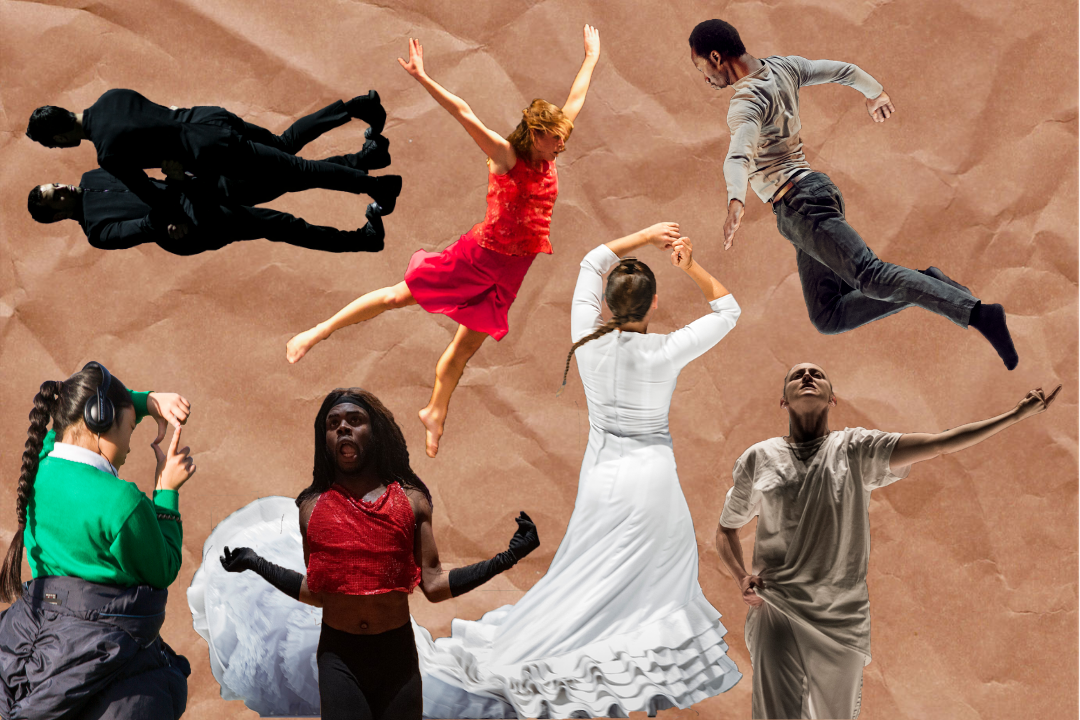
Le Patin Libre, Vertical Influences (2014)
Alexandra Palace Ice Rink / Somerset House Ice Rink / BBC
A link sent by Carmel Smith when I was still at Sadler’s Wells started the wheels turning for what turned out to be seven years of connection including three presentations, two commissions and a film with Quebec-based company Le Patin Libre. In skating they talk about ‘flow’ and something about these artists’ power, speed and grace spoke as loudly to audiences of all ages in London as it did to me. Part of what I wanted to do at DU was broaden how we look at choreography, and this lovely company were a great way to kick off my first festival.
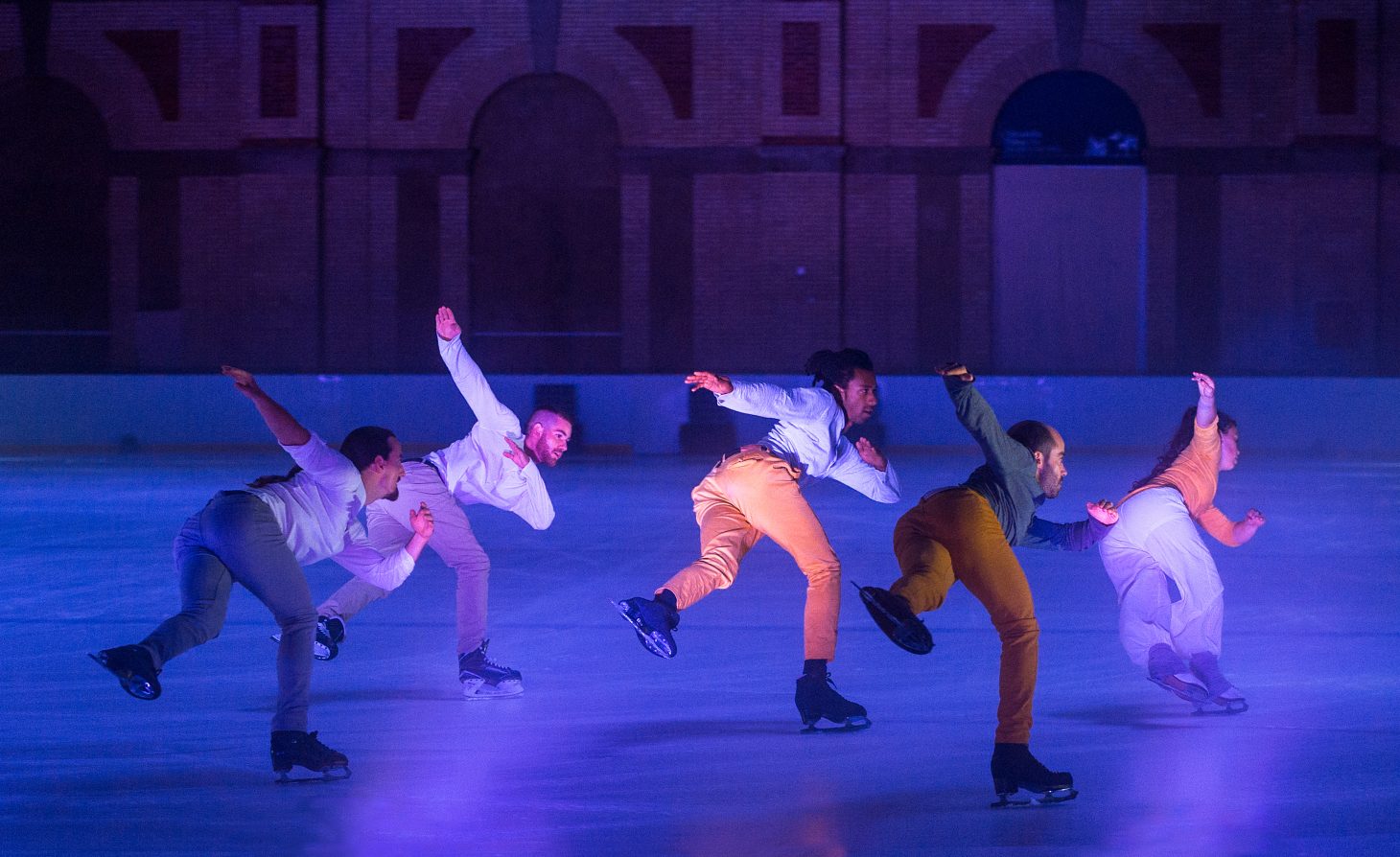
Photo: Foteini Christofilopoulou
Charlotte Spencer, Walking Stories (2015)
Greenwich Park / Brockwell Park / Springfield Park / Waterlow Park
We toured this a piece to four London parks, and it never failed to work whether with school kids or adults. It made me cry every time I did it (a great sign of success I think) as it gently asked participants to look at their outdoor surroundings afresh. An apparently simple but technically complex audio work where everyone wore headphones, I loved the fact that the different strands of sound invited the audience to become the choreography. As with the skaters, Charlotte devised a new kind of dance work – no small achievement.
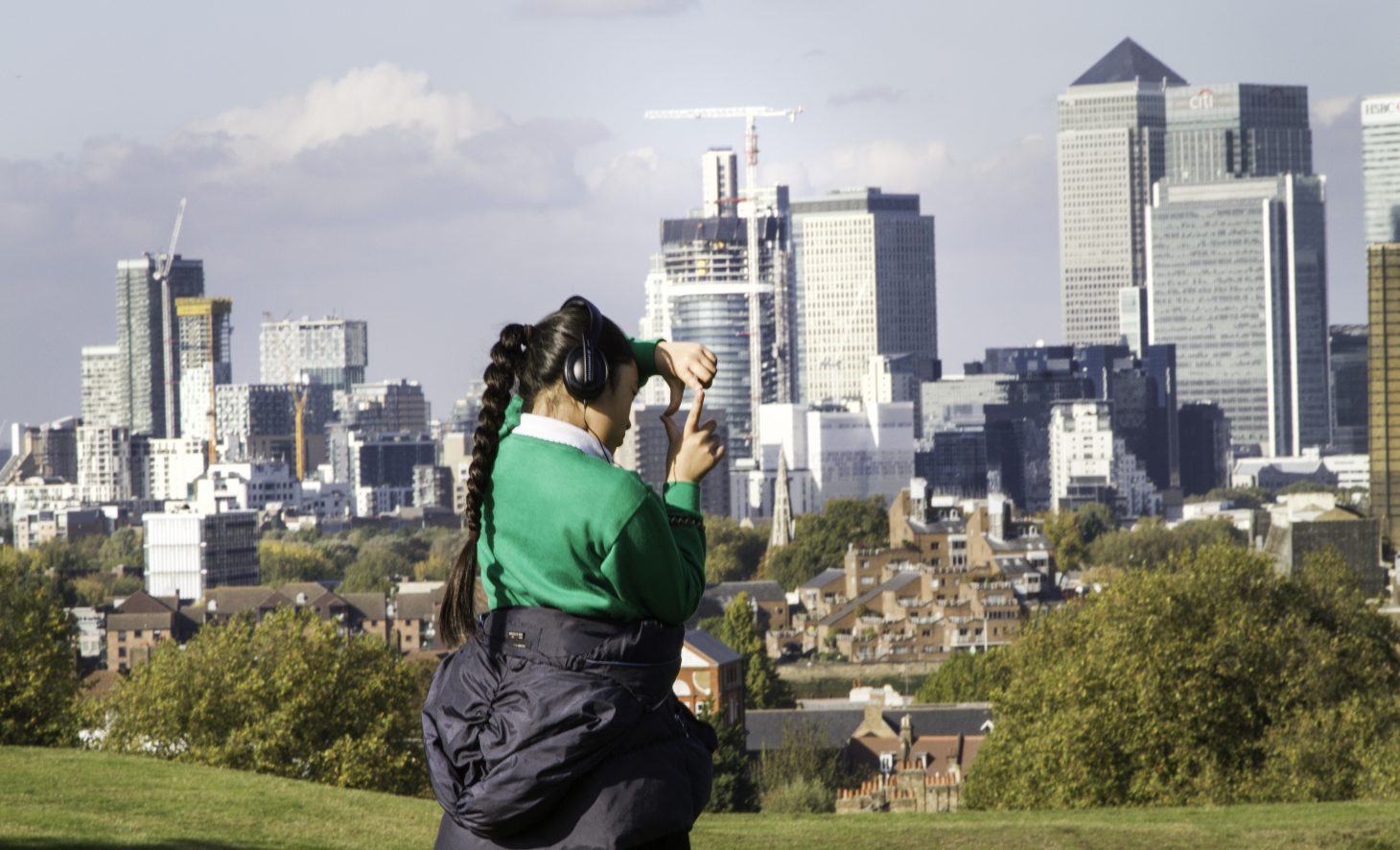
Photo: Pari Naderi
Jérôme Bel, Gala (2016)
Sadler’s Wells / Tate Modern / Bernie Grant Arts Centre
A piece that mixed professionals with non-professionals in a beautifully and politically conceived work. The frame is recreated in less than a week with local participants from each city it is presented in, and is so carefully conceived that the poetry and joy comes through loud and clear each time. Jérôme played with our expectations in a way that allowed for a memorable, witty journey of perception throughout the evening.
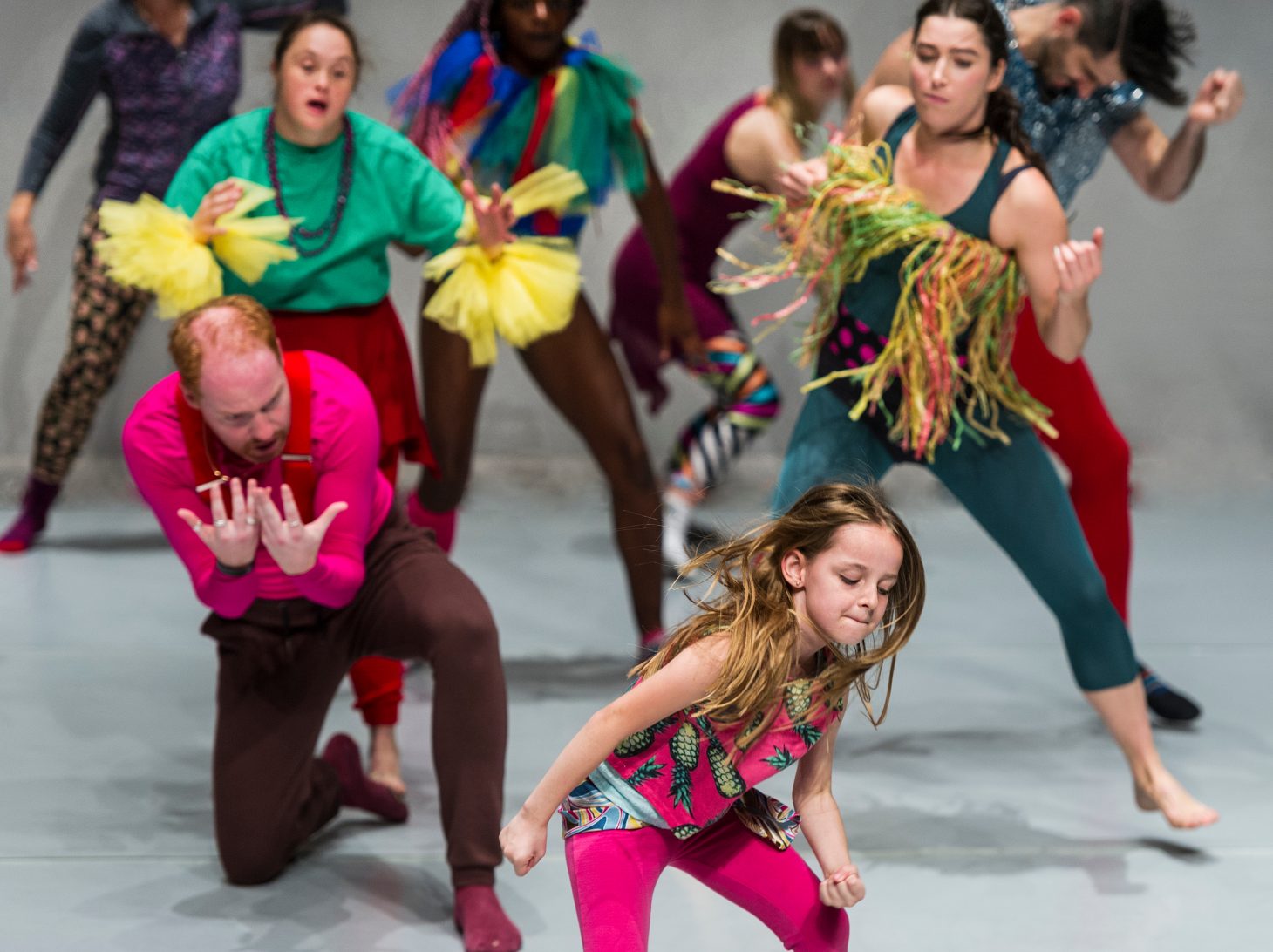
Photo: Foteini Christofilopoulou
Maguy Marin, Trois Grandes Fugues (2017)
Sadler’s Wells
The structure of this programme from Lyon Opera Ballet was to present three works by established choreographers – Lucinda Childs, Anne Teresa de Keersmaeker, and Maguy Marin – to the same Beethoven Fugue. Maguy Marin finished the evening with a burst of pure movement by these four women (pictured below). In terms of pure, gutsy, tender, complex choreography, it is an unparalleled piece of work.
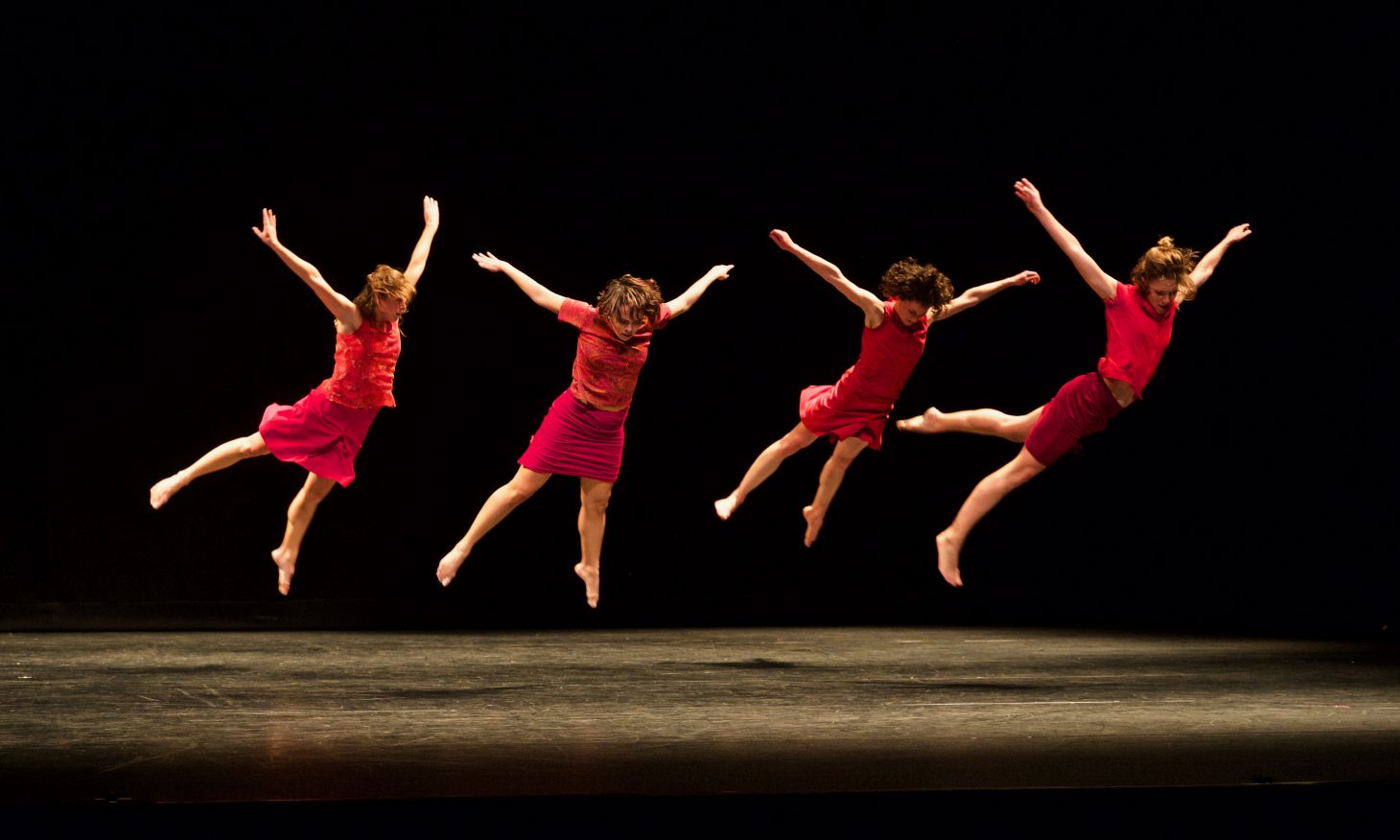
Photo: Teresa Elwes
Rocío Molina, Fallen from Heaven / Caída del Cielo (2017)
Barbican
A very established artist in the flamenco world, our invitation for Rocío to be in the festival was the first time she had shown her work outside of a Flamenco context. 5-star reviews and an Olivier nomination followed, not surprising given her phenomenal presence on stage and the bravery of her imagination to take her art form to new places.
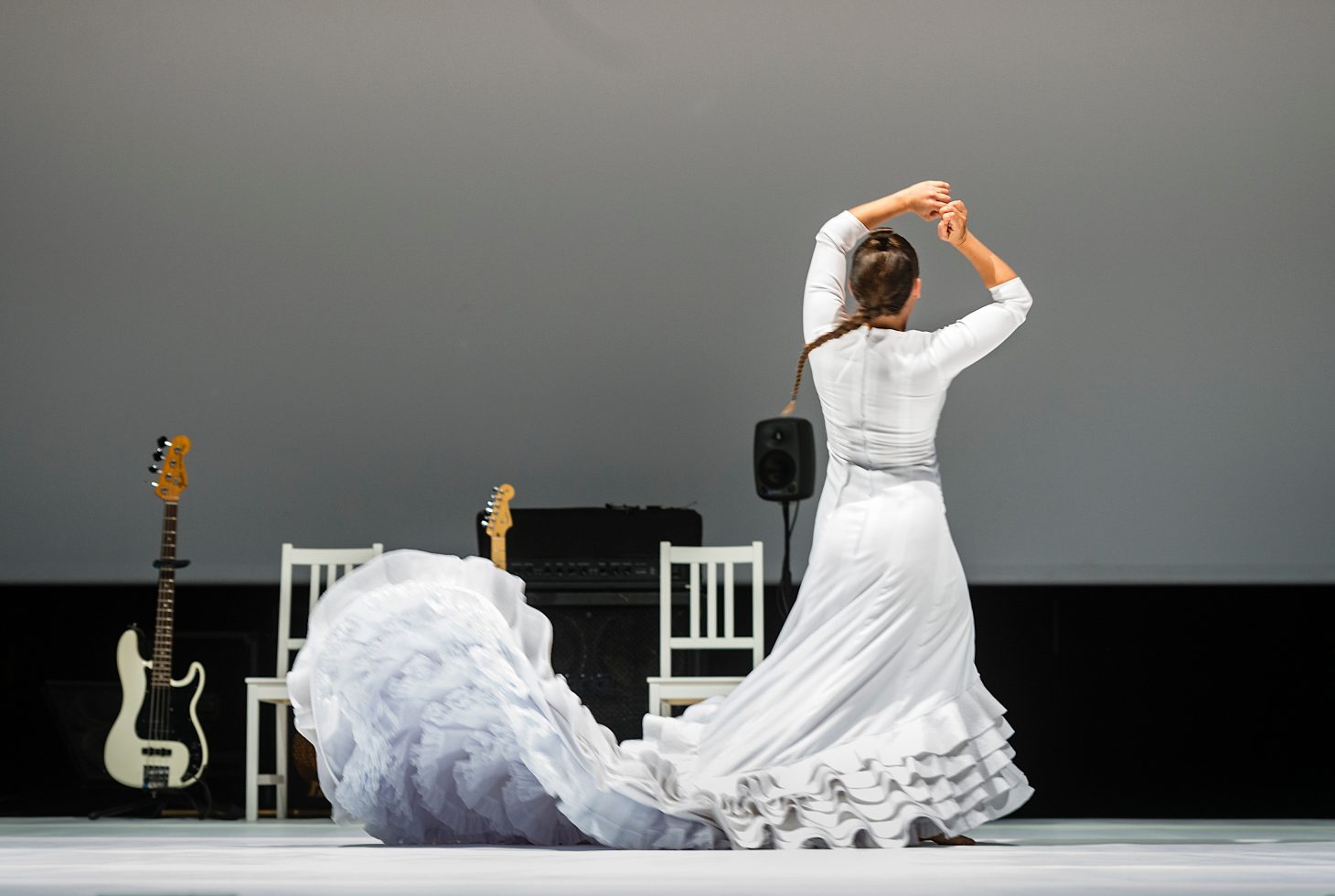
Photo: Foteini Christofilopoulou
Lisbeth Gruwez, Lisbeth Gruwez Dances Bob Dylan (2017)
Shoreditch Town Hall
The first of our ‘Takeovers’ series – this one with our great partners at Shoreditch Town Hall – finished the festival with this acclaimed solo from Gruwez, who danced on a mirrored floor to a series of Bob Dylan tracks. One of those performers who could peel an orange and keep you captivated, she gave me the kind of ‘lift off’ moments I so love in live performance, which you can never truly anticipate. The evening ended with her and her DJ calling for requests from the audience and us all having go on the dance floor.
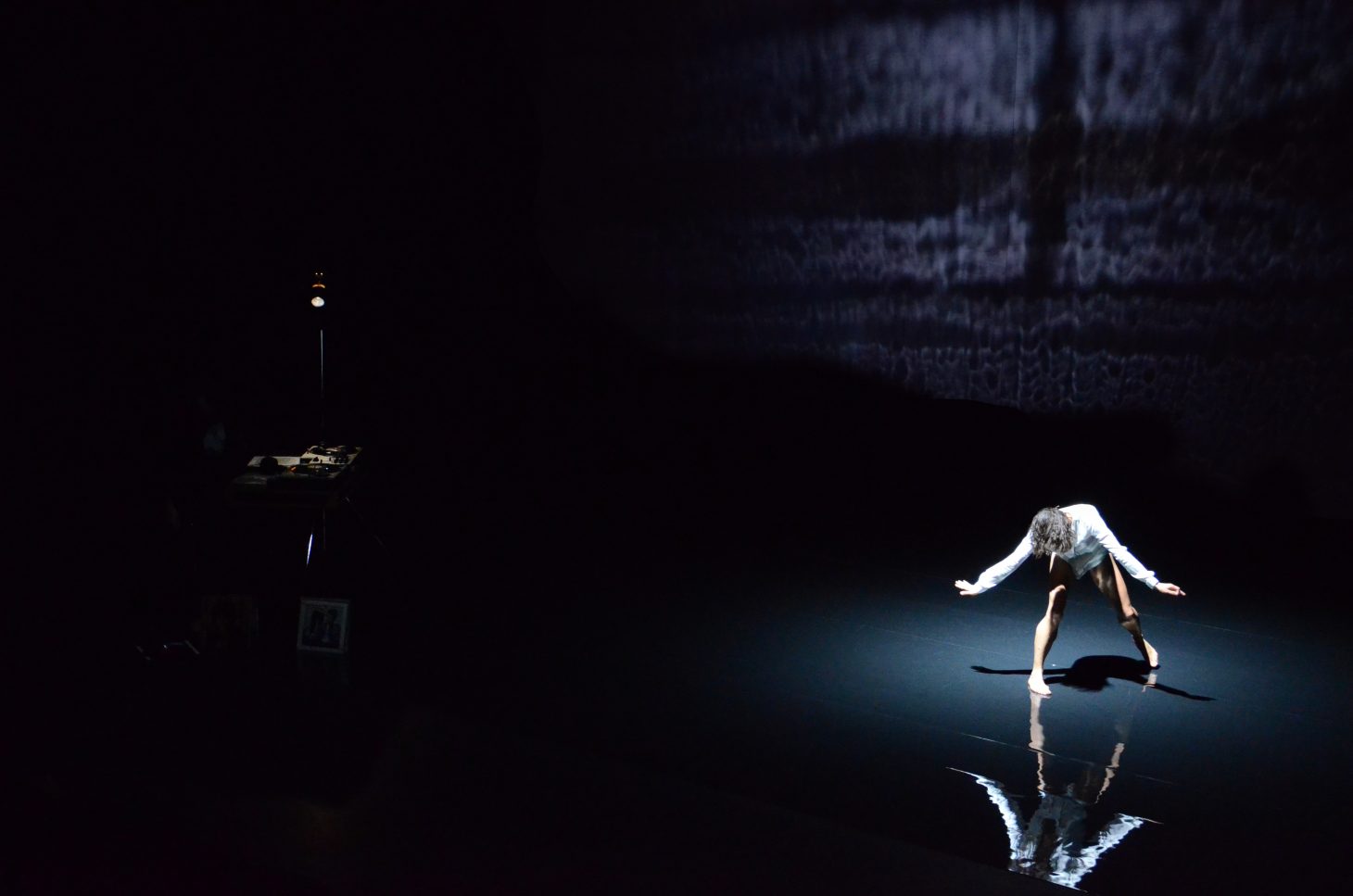
Photo: Luc Depreitere
Dimitris Papaioannou, The Great Tamer (2018)
Sadler’s Wells
The second time we had invited Papaioannou to London, and the first in which he performed for two sold out nights at Sadler’s Wells. A huge work, not only in terms of set and company, but imagination. Papaioannou’s mix of imagery touched on myth, fantasy and classical art with a surreal humour that stayed in the mind long after the night. An artist not afraid to address big questions about life, at times the piece felt like a work of visual art in motion. The fullest post show talk I have ever chaired followed, plus an Olivier Award nomination.
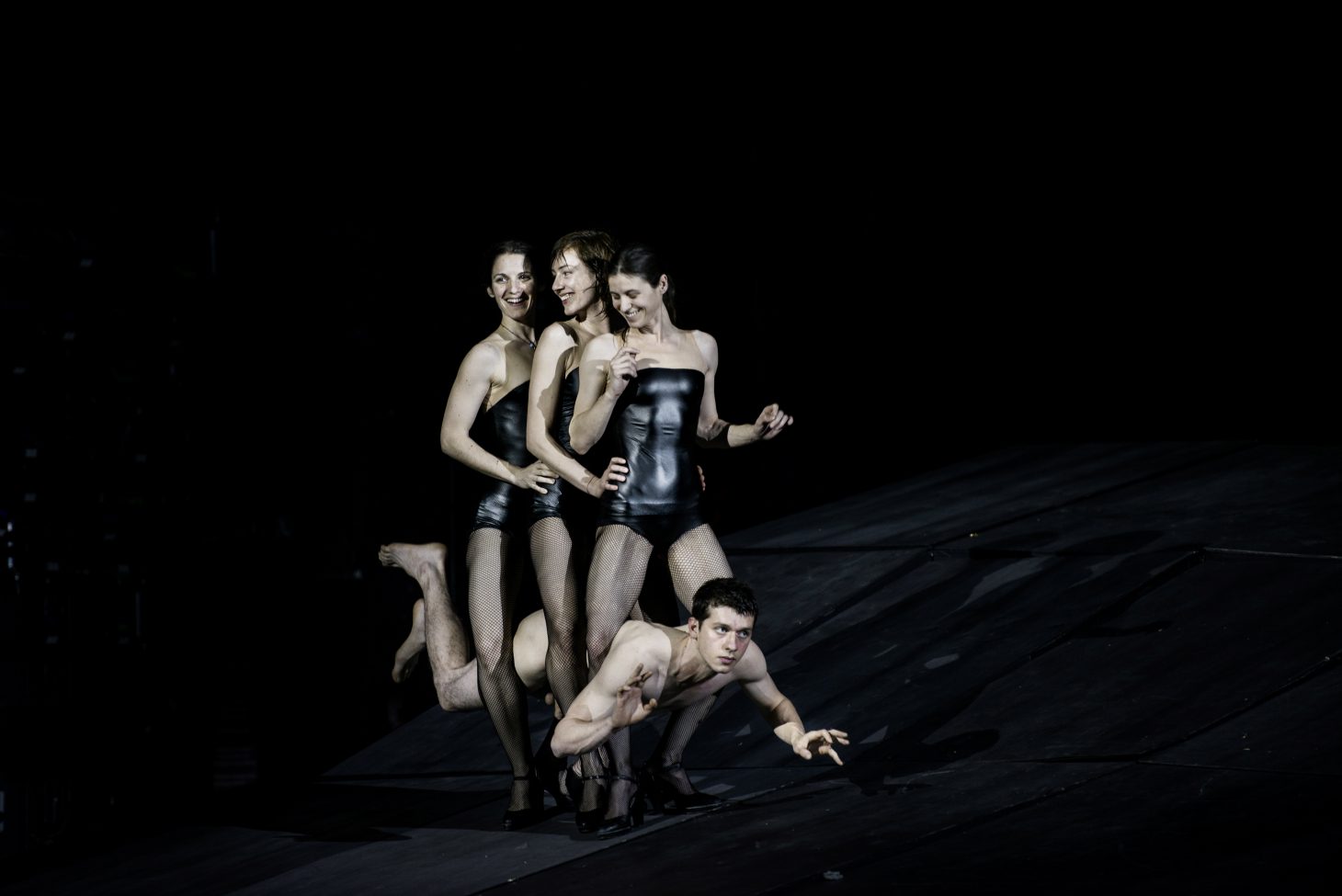
Photo: Julian Mommert
Amala Dianor, somewhere in the middle of infinity (2019)
Linbury Theatre, Royal Opera House
A research trip to Paris to catch a matinee, one gloomy day in February, subsequently led to our invitation for Amala’s debut London performances. Three men from very different dance backgrounds danced the most joyful and playful trio together, rich in dynamics and full of gentle skill. It was a kind of milestone for me, marking the hybridisation of forms and cultures that the contemporary scene is shifting into.
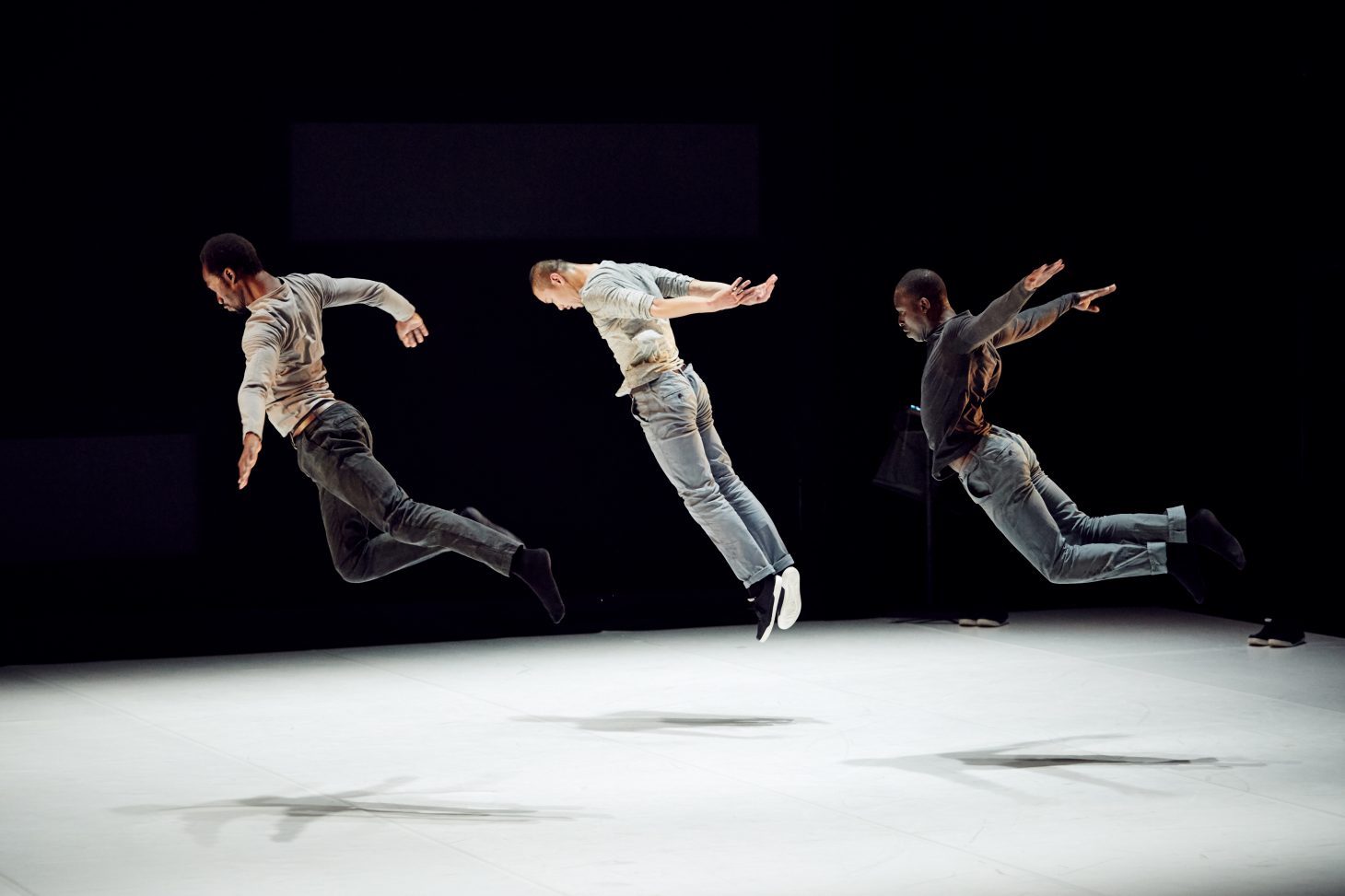
Photo: Valérie Frossard
Fairfield Takeover, Boy Blue / Mythili Prakash / Urban Playground Team / Philippe Saire / + more (2019)
Fairfield Halls, Croydon
18-months in the planning, this major weekend at the newly refurbished Fairfield Halls brought together international commissions, local professionals, participatory projects, free outdoor performances, indoor workshops, a baby rave and more. It was our third visit to Croydon, and the first time we really managed to combined extensive creative learning work within the DU festival programme. The positive feedback received from participants, audiences and artists alike has paved the way for future such projects in other London boroughs.
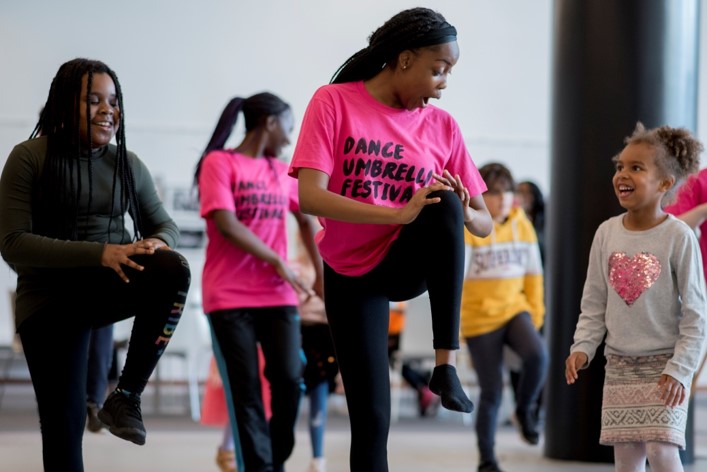
Photo: Camilla Greenwood
Jay Jay Revlon & Cai Revlon, The Big Pink Vogue Ball (2019)
Shoreditch Town Hall
The final year of Freddie Opoku-Addaie’s three-year tenure as DU’s Guest Programmer, and what a way to end it. This Ball was like no other. Inviting, fun, abandoned, inventive and accessible (it was signed throughout by two stalwart signers, Ali Gordon and Jacqui Beckford, who kept going for hours). There were voguing workshops the night before to help people get in the swing, and a great party atmosphere on the night generated by the inimitable Jay Jay Revlon. Unforgettable (except arguably for one of our Press team, who had to be put in a taxi home and had no memory of the second half of the evening…)
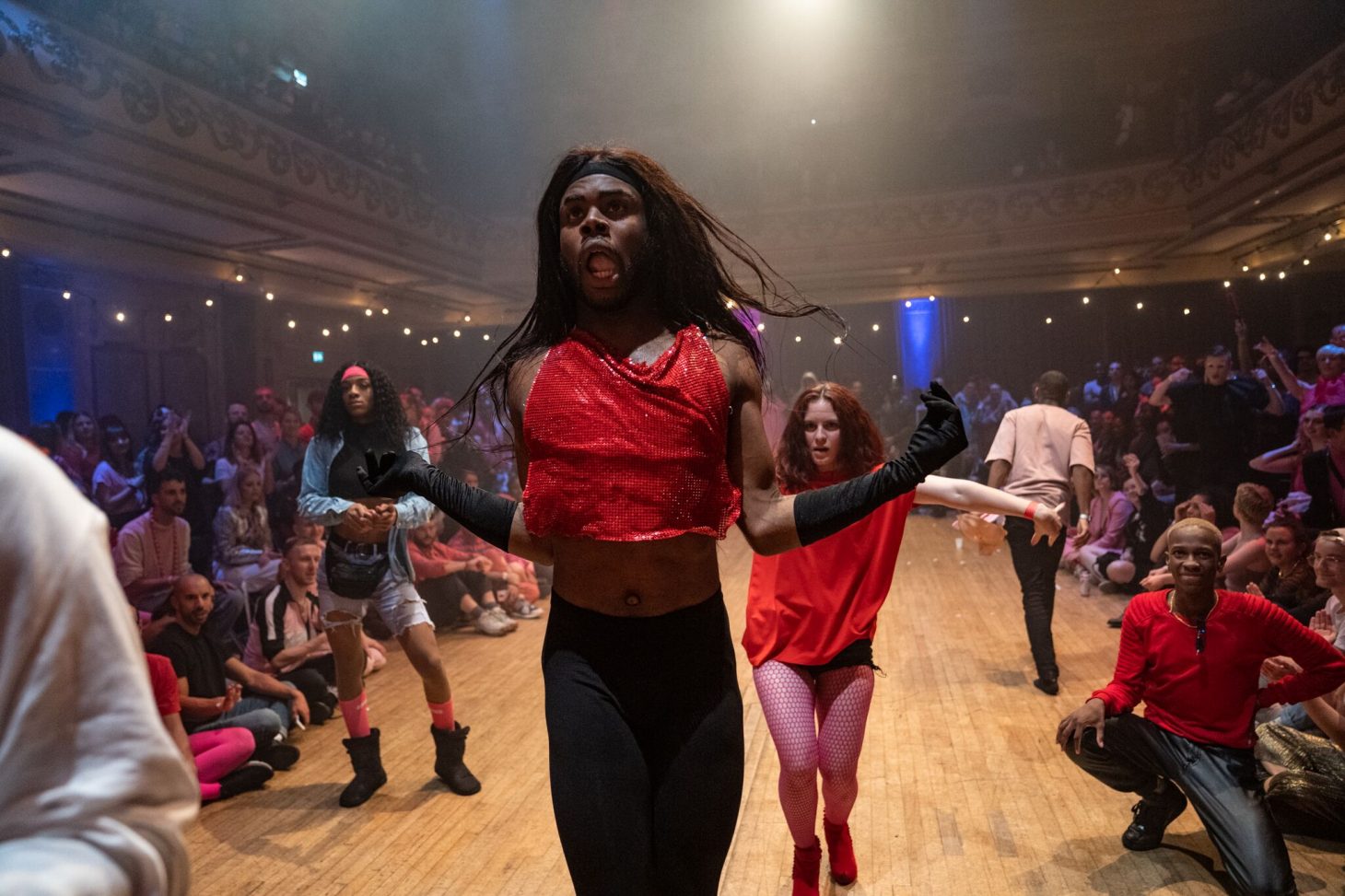
Photo: David Morrison
Oona Doherty, Hard to be Soft – A Belfast Prayer / Hope Hunt and the Ascension Into Lazarus (2019)
Southbank Centre / The Yard
I see part of DU’s role as being a catalyst, introducing new names to London audiences, and I was delighted to present Oona’s first London performances of these two shows. A force to watch both as a performer and a choreographer, she has already managed to create a distinctive identity with her work, and I am really looking forwards to where she goes next. Hard to be Soft was The Guardian’s No 1 Dance Show of the Year: not a bad way to start.
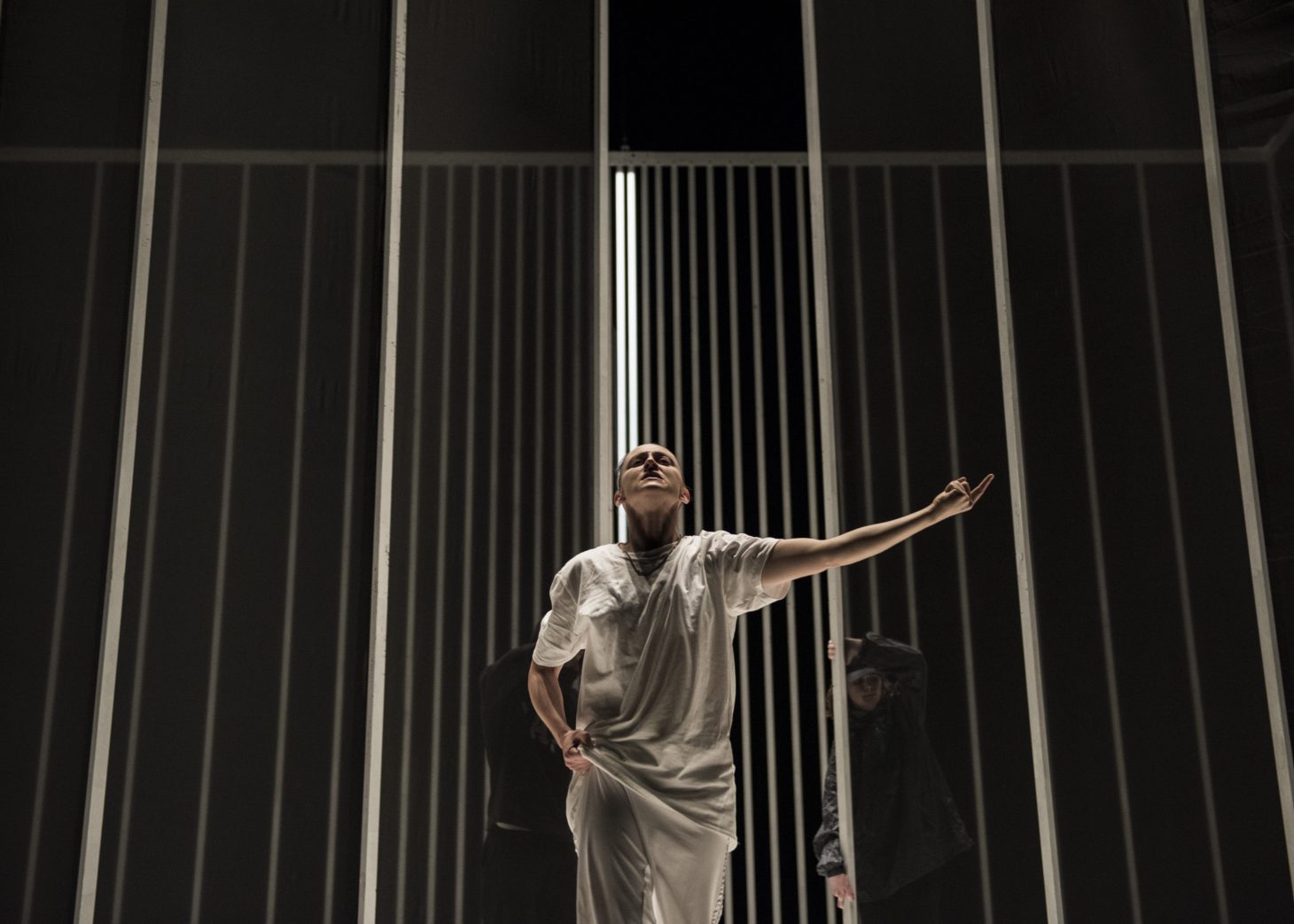
Hard to be Soft - A Belfast Prayer, Photo: Luca Truffarelli
If you want to take a deeper dive into Emma’s time at DU, you can browse all of the festival brochures here.
